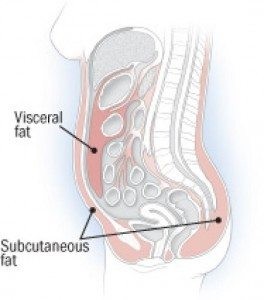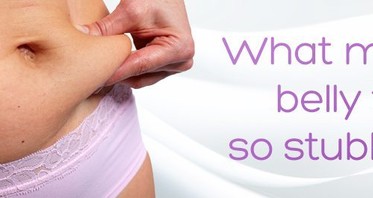At Cosmos Clinic, we commonly encounter clients concerned about belly fat, which can be challenging to lose. Belly fat often accumulates first and can be the last to disappear, even with diet and exercise. Addressing this area effectively requires a tailored approach that considers each individual’s unique body and health profile.
Like many, you may have been spending hours at the gym working on your abs with little to no results. Believe it or not, exercising may not be the answer to get rid of the excess belly fat. We look into what makes belly fat so stubborn and why your fitness regime might not be the solution to a flatter stomach.
The types of Belly Fat
Not all belly fat is the same. There is the subcutaneous fat, which you would be more familiar with as the ‘wobbly’ fat and the visceral fat, which is the internal fatty tissue. The subcutaneous fat is the kind we are all desperate to get rid of, but it is the visceral fat which can lead to some pretty serious health conditions.

Visceral fat wraps itself around your vital organs, effectively strangling them. The more it grows and expands, the more congested your abdominal space becomes, hence the bulge. Visceral fat is biologically active; meaning it virtually has a life of its own producing hormones and substances that when in excess, become toxic.
One such immune system chemical to be released by visceral fat is the cytokines tumour necrosis factor and interleukin-6. These cytokines have been found to increase the risk of cardiovascular disease. Other health problems associated with visceral fat include diabetes, colorectal cancer and other chronic illnesses. In women, it is also linked to breast cancer and the need for gallbladder surgery.
Subcutaneous fat is found directly under the skin. This is the type of fat that when you grab your belly it jiggles, wobbles and causes the dimpled look. Subcutaneous fat is responsible for cellulite formations found commonly on your stomach, buttocks and thighs. And while it does pose aesthetic concerns, it is far less dangerous to your health than visceral fat.
Burning visceral fat vs subcutaneous fat
Visceral fat may be the more dangerous of the fats, but studies show is the less stubborn of the two. Recent studies have found for every 10% of weight lost, 30% of that will be visceral fat and what’s more, just 30 minutes of exercise a day was enough to see it begin to disappear.
This may be explained by the fact that visceral belly fat has a greater blood supply, is more responsive to the hormone cortisol and compared with subcutaneous fat, is less sensitive to insulin. Subcutaneous belly fat responds far less to the fat-burning hormone, catecholamine and is much easier to store within the body.
The good news for your health is that by focusing on burning fat you can get rid of both subcutaneous and visceral. But if your diet and exercise haven’t done much to reduce the belly bulge, then there are possibly some other factors in play.
Your hormones are out of whack
When exercise and diet are failing to shift the extra kilos of belly fat, it is often a sign your hormones are imbalanced. In particular, it is a sign of high oestrogen, low testosterone, high insulin, high cortisol and low DHEA, which is a hormone of the adrenal gland. When all these hormones are functioning correctly there is a healthy balance allowing fat loss to occur.
But what does that all mean…
High Insulin – High insulin levels can lead to insulin resistance and type 2 diabetes. Insulin’s main function is to process sugar in the bloodstream and carry it to the cells. This is then either stored as fat or used for fuel. Excess sugar and carbohydrates are the primary cause of high insulin levels. If you become insulin resistant your brain won’t act normally to suppress hunger. It also doesn’t provide the fuel for your muscles, leading to loss of muscle mass, fatigue and overall poor performance.
High Cortisol – Cortisol is our stress hormone and when there are consistently high levels of this hormone it affects your body composition and health. High cortisol can be reflected in anxiety, exhaustion and digestive issues such as irritable bowel syndrome. When it comes to belly fat, Researchers at Yale University found slender women with high cortisol had more abdominal fat. This can be explained by its effect on the brain as cortisol impacts hormones that are crucial in regulating various bodily processes, including metabolism and stress response. Too much cortisol drives cravings and causes people to make the wrong food choices. High cortisol levels can also result in a loss of muscle mass as well as libido and bone density.
High Oestrogen – Oestrogen has anti-insulin and anti-cortisol effects on the abdomen. Men who carry excess kilos in their gut speed up the conversion of testosterone into oestrogen. As the levels of oestrogen increase, so does the accumulation of belly fat acerbating the problem. Michael Jensen, M.D., professor of medicine in the Mayo Clinic’s endocrinology division states, weight gain in women experiencing menopause is likely to be in their bellies due to an imbalance in oestrogen.
Low Testosterone – A study by the University of Washington found that men with low levels of testosterone are more likely to gain a ‘beer belly’ as well as other body fat. However, when these levels are balanced, a prompt loss of body fat can be seen. While testosterone does naturally decrease with age, we are seeing it reduce much earlier in life than ever before. This can be due to an increase in stress as the body focuses on making cortisol rather than testosterone as well as with ageing and obesity. What is interesting to note here is that women with high levels of testosterone tend to carry more belly fat.
Low DHEA – Produced by the adrenal glands, DHEA plays a major role in influencing our ability to lose fat and gain muscle which is why it has been labelled the anti-ageing hormone. DHEA is the precursor to testosterone and oestrogen and aids to offset the negative effects of cortisol.
Changes you can make
To face the stubborn belly fat head on you need to focus on balancing your hormones with a proper diet, regular exercise and adequate sleep. Not to mention of course, motivation and hard work! Here are some tips to get you started:
- Keep moving
- Consume more protein as a diet high in protein could help protect you again insulin resistance
- Eat healthy polyunsaturated fats like those found in nuts, seeds and fish to help you gain more muscle mass and less body fat in particular visceral
- Reduce your stress levels to help lower your cortisol hormone
- If you need to raise your testosterone levels, ensure you get enough Zinc in your diet
- Get a good night’s sleep – eight hours is the number you should aim for. According to Wake Forest University, five hours or less increases your visceral fat levels due to the rise in cortisol levels
- Avoid processed foods in particularly high sugar
- Up your strength training to increase muscle mass and help the body burn more fat
- Do interval training to increase your heart rate and help burn more fat. High-intensity training has been shown to work well on combating belly fat
Cosmetic surgeries that can help overcome the belly bulge
As we age our body’s response to losing and gaining weight changes. Our metabolic rate is altered and for some, a shift in hormones can mean the struggle to lose the extra kilos is almost impossible. Not everyone is able to gain the results they desire through dieting and exercise, which is why advancements in cosmetic surgery have led to many opting to overcome the belly bulge through surgical and non-surgical procedures.
Liposuction, including advanced procedures like Vaser Hi Definition, can be an option for those considering medical interventions for abdominal fat reduction. These procedures should be considered after a thorough consultation with a qualified medical professional to understand their suitability, potential results, and associated risks.
CoolSculpting is another cosmetic procedure that has proven to be highly successful with eliminating excess belly fat. And a Tummy Tuck operation can help in cases where the elasticity of the belly has weakened leading to a bulging belly.
Getting rid of excess belly fat is no easy task and is a problem for so many people. While dieting and exercising may be the solution for some, resetting the hormones and cosmetic surgery has also proven successful – removal of subcutaneous fat with large volume such as through liposuction will reduce your insulin levels. If you are regularly sweating it out in the gym and not seeing any results, perhaps you need to consider the latter two options to achieve those killer abs!






